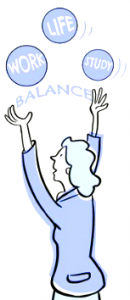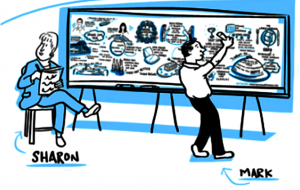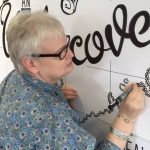Lost for words? Try picturing this… by Mark Spain and Sharon Ombler-Spain
In today’s swirl of technology and big data we are constantly bombarded with information. Smartphones, tablets, computers, TVs – even our watches – make news and information instantly available 24/7. Whilst attention has
been focused on the instant nature of information, the way that information is presented is equally important.

Attention spans have changed to fit lifestyle. No longer do people sit and read newspapers cover to cover; people skim-read and move on. Using technology, people jump between multiple websites, cherry picking particular subjects and dipping into others.
Naturally, these new habits mean that good and effective communication has to engage in multiple ways simultaneously in order to draw the viewer into a story. Whilst news and education is focused on the personal, the transmission of information has become impersonal.
What if how we record and design information is just as important as what we are trying to communicate? Large, hand drawn visuals, for example, could be used to engage people from many different perspectives. Can illustrations therefore be perceived to multi-task in a way that plain text cannot?
Graphic recording is a modern technique which can be used to educate a group on a given issue, to both inform those who know very little about a subject and those who are well versed. The resulting illustrative notes engage the eyes, the heart and the minds, and provide a visual overview of a discussion. This way of displaying ideas could even reveal journeys or unexpected connections.

Humour can be a useful tool to engage with the audience when recording events visually, but sometimes a topic does not allow for that. We provided graphic recording for a recent event discussing Modern Slavery. Our visual note-taking required powerful visual metaphors and yet, the trauma of some incidents meant that we chose to represent them through the use of shattered typefaces and colours rather than a drawn visual.
Visual minutes and illustrations are an equalising way of sharing information across cultures, languages and ages. Many people who see their own words depicted in this way appreciate that the story is theirs, that it fits in with how they want their story to be seen and understood. They also enjoy how, through the eye-catching illustrative style, their story stands out from the visual clutter of day to day life.
Visual minutes and illustrations can indeed tell a thousand words.
If you would like to see our work please go to www.twovisualthinkers.info
Authors:

 Mark Spain and Sharon Ombler-Spain form the team at Two Viz Think Ltd, (short for Two Visual Thinkers). As husband and wife they have combined their talents to offer Graphic Recording.
Mark Spain and Sharon Ombler-Spain form the team at Two Viz Think Ltd, (short for Two Visual Thinkers). As husband and wife they have combined their talents to offer Graphic Recording.



